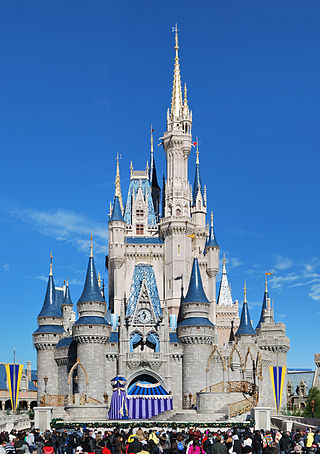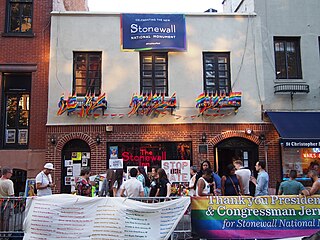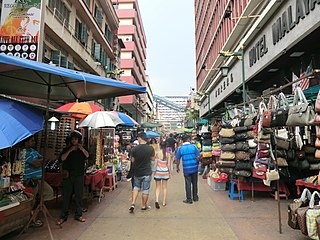Related Research Articles

A tourist attraction is a place of interest that tourists visit, typically for its inherent or exhibited natural or cultural value, historical significance, natural or built beauty, offering leisure and amusement.
Tourism in Puerto Rico attracts millions of visitors each year, with more than 5.1 million passengers arriving at the Luis Muñoz Marín International Airport in 2022, a 6.5% increase from 2021, the main point of arrival into the island of Puerto Rico. With a $8.9 billion revenue in 2022, tourism has been a very important source of revenue for Puerto Rico for a number of decades given its favorable warm climate, beach destinations and its diversity of natural wonders, cultural and historical sites, festivals, concerts and sporting events. As Puerto Rico is an unincorporated territory of the United States, U.S. citizens do not need a passport to enter Puerto Rico, and the ease of travel attracts many tourists from the mainland U.S. each year.

Tourism in Australia is an important part of the Australian economy, and comprises domestic and international visitors. Australia is the fortieth most visited country in the world according to the World Tourism Organization. In the financial year 2018/19, tourism was Australia's fourth-largest export and over the previous decade was growing faster than national GDP growth. At the time it represented 3.1% of Australia's GDP contributing A$60.8 billion to the national economy.

In the United States, tourism is a large industry that serves millions of international and domestic tourists yearly. Foreigners visit the U.S. to see natural wonders, cities, historic landmarks, and entertainment venues. Americans seek similar attractions, as well as recreation and vacation areas.

A visitor center or centre, visitor information center or tourist information centre is a physical location that provides information to tourists.
Industries in the Maldives center around fishing and tourism, with some overlap between the two with recreational fishing.

LGBTQ tourism is a form of tourism marketed to gay, lesbian, bisexual, transgender and queer (LGBTQ) people. People might be open about their sexual orientation and gender identity at times, but less so in areas known for violence against LGBTQ people.

Tourism in the United Kingdom is a major industry and contributor to the U.K. economy, which is the world's 10th biggest tourist destination, with over 40.1 million visiting in 2019, contributing a total of £234 billion to the GDP.

La Romana is a municipality and capital of the southeastern province of La Romana, opposite Catalina Island. It is one of the 10 largest cities in the Dominican Republic with a population estimated in 2022 at 153,241 within the city limits, of whom 149,840 are urban and 3,401 are rural. The name Romana comes from the word "Bomana", a name given by Indians to what is known today as Romana River.

Sustainable tourism is a concept that covers the complete tourism experience, including concern for economic, social, and environmental issues as well as attention to improving tourists' experiences and addressing the needs of host communities. Sustainable tourism should embrace concerns for environmental protection, social equity, and the quality of life, cultural diversity, and a dynamic, viable economy delivering jobs and prosperity for all. It has its roots in sustainable development and there can be some confusion as to what "sustainable tourism" means. There is now broad consensus that tourism should be sustainable. In fact, all forms of tourism have the potential to be sustainable if planned, developed and managed properly. Tourist development organizations are promoting sustainable tourism practices in order to mitigate negative effects caused by the growing impact of tourism, for example its environmental impacts.

The Department of Tourism is the executive department of the Philippine government responsible for the regulation of the Philippine tourism industry and the promotion of the Philippines as a tourist destination.

The Korea Tourism Organization is an organization of the Republic of Korea under the Ministry of Culture, Sports and Tourism. It is commissioned to promote the country's tourism industry.
Sports tourism refers to travel which involves either observing or participating in a sporting event while staying apart from the tourists' usual environment. Sport tourism is one of the fast-growing sector of the global travel industry and equates to $7.68 billion.

The Georgia Department of Economic Development (GDEcD) is a department of the state of Georgia, United States. The GDEcD is responsible for managing resources to attract new business investments to Georgia, expand Georgia's existing industries and businesses, locate new markets for Georgian products, and promote and fund entertainment projects produced in the state.
The European Travel Commission (ETC) is an international non-profit association representing the national tourism organizations (NTOs) in Europe and is based in Brussels. It was established in 1948 to promote Europe as a tourist destination to long-haul markets outside of Europe; initially the United States, then Canada, Latin America, and Asia-Pacific later on. The ETC in 2023 had 36 member NTOs and 12 associate members from the private industry. The association aims to raise awareness of the importance of tourism among national European authorities and the general public through sharing best practices and cooperation in market intelligence and promotion.
The Oklahoma Department of Tourism and Recreation is a department of the government of Oklahoma within the Tourism and Branding Cabinet. The Department is responsible for regulating Oklahoma's tourism industry and for promoting Oklahoma as a tourist destination. It is the Department which established regional designations for the various parts of the state which are in common use today: Red Carpet Country, Green Country (Northeast), Frontier Country (Central), Choctaw Country (Southeast), Chickasaw Country, and Great Plains Country (Southwest).

The economy of the state of Florida is the fourth-largest in the United States, with a $1.695 trillion gross state product (GSP) as of 2024. If Florida were a sovereign nation (2024), it would rank as the world's 15th-largest economy by nominal GDP according to the International Monetary Fund, ahead of Spain and behind South Korea. Agriculture, tourism, industry, construction, international banking, biomedical and life sciences, healthcare research, simulation training, aerospace and defense, and commercial space travel contribute to the state's economy.
Tourism and Events Queensland (TEQ) is the Queensland Government's lead marketing, experience development and major events agency, representing the state's tourism and events industries.

Fashion tourism is a niche market segment evolved out of three major sectors: Creative Tourism, Cultural Tourism and Shopping Tourism. Fashion Tourism can be defined as “the interaction between Destination Marketing Organizations (DMOs), trade associations, tourism suppliers and host communities, with people travelling to and visiting a particular place for business or leisure to enjoy, experiment, discover, study, trade, communicate about and consume fashion.”

Tourism makes up one of the largest sectors of Florida's economy, with nearly 1.4 million people employed in the tourism industry in 2016.
References
- 1 2 3 4 "What We do". Visit Florida. Retrieved August 14, 2022.
- ↑ "Research". Visit Florida. Retrieved August 14, 2022.
- ↑ Rockport Analytics (2018). Picking up the Pace: Florida’s Tourism Performance Jumps into a Higher Gear (PDF) (Report). Visit Florida. p. 17. Retrieved August 14, 2022.
- ↑ "The Florida Commission On Tourism/Visit Florida". www.flgov.com. Retrieved November 26, 2018.